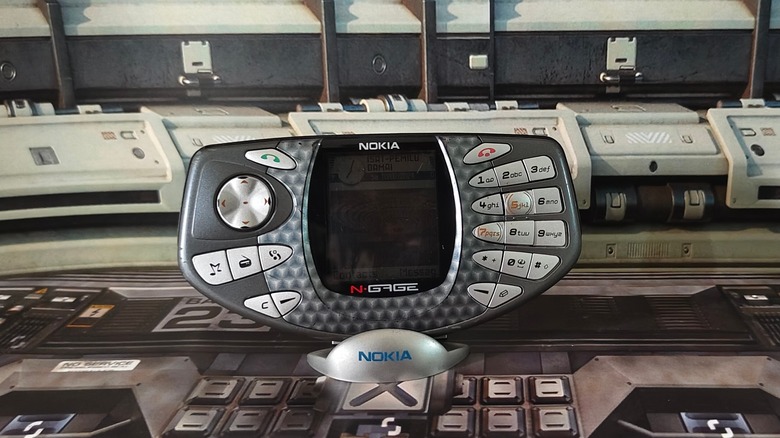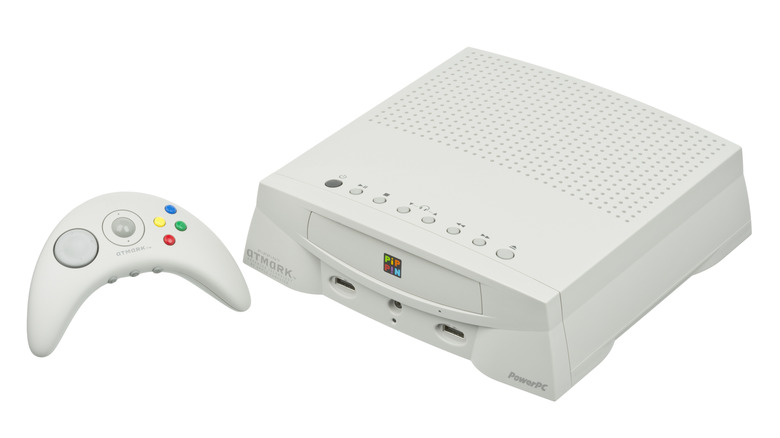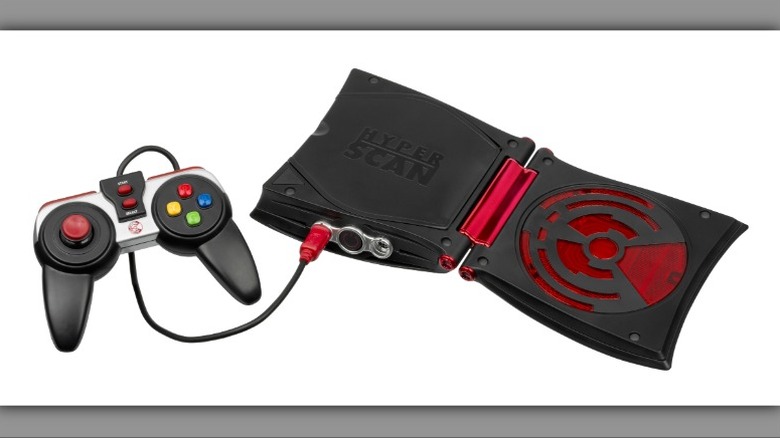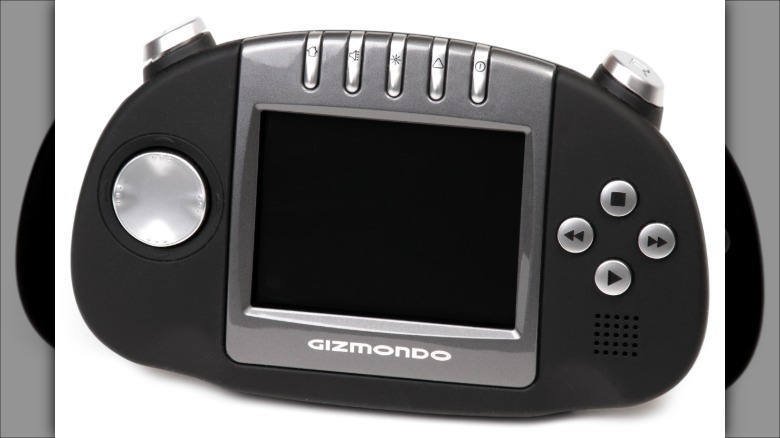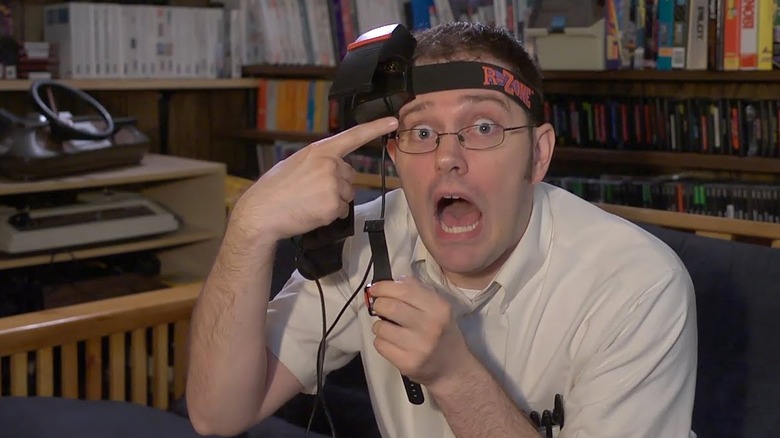5 Of The Most Bizarre Video Game Consoles Every Collector Should Have On Their Radar
The commercial video game industry has been around since at least 1972 with the release of the Magnavox Odyssey. While the power players like Microsoft, Sony, and Nintendo have risen to prominence in the decades since, the big three have always had to contend with other companies too, ranging from startups to other massive conglomerates. Both before and after the major gaming industry crash of 1983, various electronics and toy manufacturers have been throwing their hats into the ring, trying to get a little piece of this booming sector.
Obviously, since most people's attention is on the big three and PC gaming these days, few to none of these contenders have made much of a dent over the years. But the sheer experimental spirit that went into their creation makes them fascinating parts of gaming history. If you fancy yourself a collector of vintage hardware, we can think of at least five strange, obscure consoles that could find a place on your shelf, if not under your TV or in your hands.
Apple Pippin
Considering the breakout success Microsoft has had in the gaming sector, both with the rise of PC gaming and its own Xbox series of consoles, it'd make sense to wonder if its archrival Apple could pull off the same thing. Apple has, after all, been on the scene for about as long and targets similar audiences with home electronics, and some of the industry's earliest hits were either made on, or sold for, the Mac. So why hasn't it made a traditional game console? Well, the company actually did back in the mid-90s, called the Apple Pippin.
The Pippin was a collaborative effort between Apple and toy manufacturer Bandai, originally released in 1996 in an effort to broaden the presence of Apple products in the consumer household. The console itself was fine, and even had a nifty controller with a built-in trackball, but it was foiled by a couple of major problems. Firstly, the Pippin didn't have a large enough game library, and the majority of games it did have were already available to play on Mac and PC. Secondly, the Pippin retailed for $600 USD, more than twice of its contemporaries, the Nintendo 64 and PlayStation, were asking. The Pippin is a good example of a product that should work on paper, but was done in by marketing decisions.
Apple eventually did release a popular game console though: The iPhone, which with Google's Android software, helped create a mobile gaming boom that reshaped the industry.
Mattel HyperScan
More than a decade ago, the "Skylanders" series of games brought about the "toys-to-life" boom in video games. These titles worked in tandem with real-life collectibles and were such a hit that other companies, including Nintendo and Disney, got involved too. However, "Skylanders" technically wasn't the first time gaming tried to make this concept work. The first to try was the HyperScan, released in 2006.
A product of toy giant Mattel, the HyperScan's main gimmick was an RFID scanner built into the console itself. Alongside games based on major franchises like "SpongeBob SquarePants" and "X-Men," users could buy trading cards containing RFID chips. Scan the card against the console, and a player unlocked content, power-up characters, and access to save data. Unfortunately, those licensed titles were the only games on the console. The HyperScan didn't have any killer apps that warranted a purchase, and the console's low-quality parts meant it likely couldn't run popular mass-market games anyway.
Tiger Telematics Gizmondo
What was the first handheld game console you owned that had some form of wireless or online connectivity? For most of us, it was probably either the Nintendo DS or 3DS, or perhaps the PSP or PS Vita. However, the original DS' online functions were fairly minor compared to what would come next, limited mostly to Pictochat and a handful of games. In 2005, around the same time the DS came out, there was another handheld console that promised to be the intersection between handheld gaming and a personal computer: the Gizmondo.
Created by Tiger Telematics (no relation to Tiger Electronics), the Gizmondo was meant to be an all-in-one online tool and entertainment center. It could play games, of course, but it also featured an MP3 player, SMS texting, and a GPS navigator. Interestingly, the Gizmondo was available in both a full-function package for $400 and an ad-supported version for $229. Unfortunately, neither model was very attractive, with only around 25,000 units estimated to have been sold, according to Inverse's Input. That might have been because the console only had 14 games to its name in total, though it may also have been because Vice reported that the company that sold it had ties to the Swedish mafia.
Nokia N-Gage
In the 2000s, personal cell phones were the hottest ticket on the market. Everyone wanted a phone to call their own, and one of the biggest names on the scene was Nokia, whose impact-resistant devices are still the stuff of legends to this day. In 2002, looking to get ahead of the next generation of handheld consoles from the giants of the gaming industry, Nokia launched a daring Hail-Mary in the form of the N-Gage, a hybrid game console and mobile phone, perfect for the trendy teen of the age.
The most prominent element of the N-Gage was that it was a fully functional cell phone. However, to alleviate concerns of cell phone radiation, the developers placed the speaker and receiver on the side of the console, forcing you to hold it next to your head like a taco. In spite of that weird decision, Nokia did manage to secure several impressive gaming partnerships from the likes of Activision, Konami, and Sega to land their respective franchises and mascots on their burgeoning platform. Sadly, despite the brand's fervent efforts to make the device look like the biggest, coolest thing, the N-Gage was a complete failure. Only about 3 million units were sold during the console's lifespan from 2002 to around 2006.
Tiger R-Zone
If someone asked you to name a virtual reality-centric video game platform released prior to the current crop of VR headsets, which would you name? Probably the 1990s-era Nintendo Virtual Boy, right? Certainly, that's the most obvious and high-profile answer, but remarkably, the Virtual Boy wasn't the only gaming console to attempt shoving an unpleasantly red-tinted screen in your face. Seemingly by complete coincidence, Tiger Electronics, the company known for those cheap LCD games, attempted to release a similar console at almost exactly the same time as the Virtual Boy, the R-Zone. No, we don't know what the "R" stands for, but it's probably "red."
The R-Zone was billed as a true virtual reality experience, with advertising touting immersive, full 3D images blasted into your eyes via the head-mounted screen. Cartridges could be plugged into the headgear, serving as the game screen, while a mirror would reflect it down to the eye-level panel. Unsurprisingly, the advertising was rather exaggerated. These weren't 3D games, but rather the same old LCD puppet show as every other Tiger game, just shining directly into your eyes. Tiger attempted to release several other versions of the R-Zone in a more traditional handheld form, without the VR gimmick, but it ultimately flopped.
